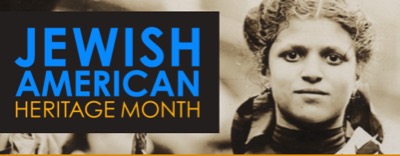 JEWISH AMERICAN HISTORY MONTH
JEWISH AMERICAN HISTORY MONTH
For more than a decade, Jewish American History Month has been an official national observance. President W. Bush proclaimed the special focus in 2006 after bi-partisan congressional support. Various receptions, events and special exhibits are usually held each May and the Library of Congress set up this extensive website to provide photos, documents and historical background in general. Within that larger site, on this page, librarians link to a long list of historical materials that relate to American Jews over the last four centuries. There’s even a special section of the site welcoming teachers who are looking for classroom materials.
.
 ASIAN PACIFIC AMERICAN HERITAGE MONTH
ASIAN PACIFIC AMERICAN HERITAGE MONTH
President Jimmy Carter launched this special observance in 1978, following a congressional resolution. The declaration called this a commemoration of “the immigration of the first Japanese to the United States on May 7, 1843, and to mark the anniversary of the completion of the transcontinental railroad on May 10, 1869. The majority of the workers who laid the tracks were Chinese immigrants.” The Library of Congress also hosts a resource-rich website. The librarians offer these links to exhibits and collections. They also offer materials for teachers.
.
.

